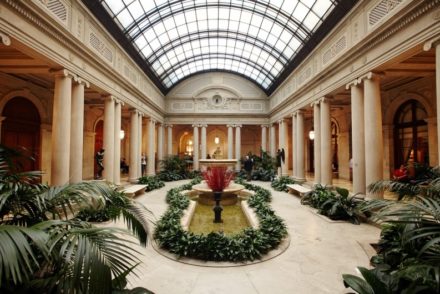Part 10 of Opinion, Value & Taste series
The Lessons of History – Bening, Rossetti and Kinkade reconsidered
What emerges here is the sense that very few works of art or architecture could historically be considered by one hand alone. Does their value, and hence their quality, fall as a result? I think not. We simply recognise the collaborative effort required to produce work on a grand scale. This work, at the very least, is imbued with the spirit and inspiration of its progenitor. This argument certainly prevails when we look at the Flemish illuminated manuscripts. It is entirely possible that pupils of Floris and Bening may have exchanged places in order to widen their repertoire and experience. The Pre-Raphaelite Brotherhood, as its name implies, believed in a commonality of interest and, as I mentioned earlier, was happy to coalesce the ideas and imagination of others. One must remember that this confederation of men was formed in 1848, a year in which revolution and uprising fomented throughout Europe. They sought to regenerate culture and society in the interests of what Rousseau referred to as the greater good and their art was one manifestation among many. Whether I like it or not is of secondary importance.
Drawing artistic inspiration from the past and revolutionary fervour from the present, we can observe a symmetry to their efforts, as they alternately kissed and bit the hands that fed them. Viewed in isolation, there are many fine works of art within this genre, as The Royal Academy show testified. It would be quite wrong to deny their innate qualities or the motivation behind them. For every dreamy Rossetti, on which I would pass, there is the punchy social realism of Work by Ford Madox Brown, a monumental piece I could certainly linger over, albeit not over my mantelpiece.
There is evidently a common language that binds the Flemish artists, on both canvas and paper, with the brotherhood and innumerable movements in between. They may bicker and argue but they value and understand one another. Conversely, what language does Kinkade speak? His value may be measured in his popularity across those swathes of Middle America who think Art is a diminutive of Arthur. This points to a general lack of discernment and a dumbing down that strangely lies at odds with the creative energy and pursuit of excellence that so characterises the country in other respects. As for my personal view, I love the Flemish manuscripts, selectively appreciate the Pre-Raphaelites and look slack jawed at Kinkade. And what of taste? I am sure that the medieval illuminators and the brotherhood received their share of opprobrium when they challenged the conventional boundaries of their time. Each is representative of good taste in that they aspire to intellectually and aesthetically engage with the viewer and, to varying degrees, they succeed in their aims. Kinkade does no more than fill a wall, I’m afraid, and thus exhibits no taste at all. How interesting instead to see the introduction of a Goyaesque element to his oeuvre whereby, peeping out under the trellis, we spy two headless bodies swinging from a branch. That might be deemed very bad taste indeed but his value, in my opinion, would rise inexorably.



No Comments